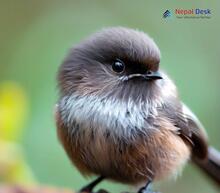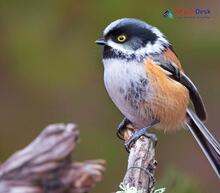Nestled within the breathtaking landscapes of Nepal lies a hidden gem: the fascinating world of Aegithalos birds. These charming species, with their distinctive characteristics and unique evolutionary relationships, are truly a delight for researchers, birdwatchers, and nature enthusiasts alike. Here, we will explore the classification, common features, evolutionary relationships, and nomenclature of these mysterious creatures found in the skies above Nepal.
Classification and Common Features
The Aegithalos genus is part of the Aegithalidae family - a grouping that includes other bushy-tailed birds such as long-tailed tits and bushtits. Within this genus, you'll find approximately ten diverse species varying in size, color patterns, and habitat preferences. Despite their differences, all Aegithalos species share certain traits such as small body size (measuring between 11 – 15 cm in length), an unmistakable brush-like tail comprising most of their body length, and gregarious nature as they often travel and forage in mixed-species flocks.
While every species within the Aegithalos genus boasts its unique markings and badges to set them apart from their cousins (such as the Black-throated Bushtit's striking black bib), one common feature among these birds is their distinct high-pitched calls that echo through the forests.
Evolutionary Relationships
The Aegithalos genus' evolutionary history is a gripping narrative that reflects how geographical factors have impacted species diversity. Molecular studies on these tiny birds revealed that they are closely related to larks and swallows rather than parids or corvids as initially theorized. This surprising link suggests that Nepalese Aegithalos species have a separate evolutionary trajectory that diverged from their ancestral lineage and underwent adaptive radiations to give rise to the present-day species.
Nomenclature: The Language of Aegithalos
The nomenclature of Aegithalos species is primarily rooted in ancient Greek, as many bird names often are. The word 'Aegithalos' itself originates from the Greek words 'aigithos,' which refers to a small bird, and 'thalos,' meaning young or tender. This charming name perfectly encapsulates the delicate splendor of these captivating feathered creatures.
Within the Aegithalos genus, you'll encounter an array of species names that reflect the unique characteristics these birds possess. For example, the White-throated Bushtit (Aegithalos niveogularis) derives its name from Latin 'niveus,' meaning snow-white and 'gula,' which signifies throat – accurately describing this bird's stunning white throat patch.
In conclusion, the Aegithalos birds found in Nepal are not only visually stunning but also present intriguing insights into avian evolution and diversity. By exploring their classification, common features, evolutionary relationships, and nomenclature, we gain a greater appreciation for these delicate creatures and their significance within Nepal's rich natural heritage. Whether you're an avid birdwatcher or just appreciative of nature's wonders, make sure to take a moment to marvel at these exquisite avian treasures in their enchanting Himalayan abode.




